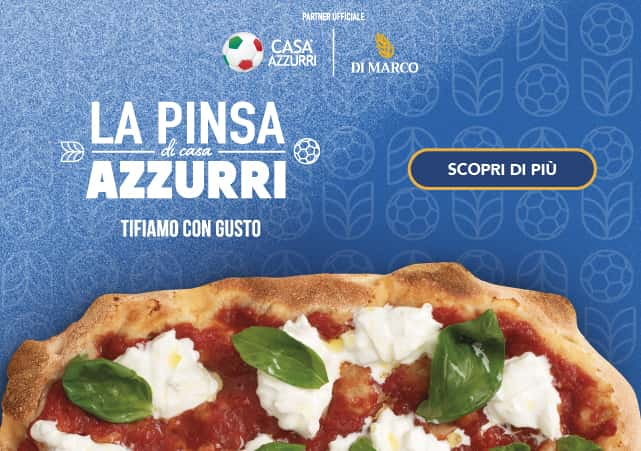To understand the role of frozen pinsa bases in the world of retail, let's start with a question: what are the main trends, and what challenges does a buyer face every day in the baked goods aisle?
The trends of the moment: innovation and healthiness
Let's start with the assumption that, after the inevitable (sharp) downturn due to the pandemic, consumption has recovered substantially and, in several cases, retailers have decided to give even more relevance and space to baked goods - among products made in-house and those purchased.
Although the baked goods industry is strongly connected to tradition, it cannot overlook unequivocal signals from consumers, particularly those related to innovation and healthiness. For the right reasons or not, bread and its variants are very nutritious foods and among the first to become targets of low-calorie diets.
From our point of view, there is no doubt that the most recent consumer trends have fostered the explosion of pinsa as one of the most interesting market trends of recent years: if from an innovative point of view pinsa is a particular and "modern" variant of pizza, lightness is one of the goals that prompted us to create it back in 2001. We are not at all surprised by the success the product has had in recent years in bars, restaurants and large-scale retail outlets.
Pinsa in storess and the pain points for buyers
Today, it would be very strange not to see pinsa bases in stores side by side with traditional piadinas, focaccias, pizzas, and the whole universe of pre-stuffed baked goods. In fact, we believe that pinsa, and frozen pinsa bases in particular, can effectively meet the challenges of buyers, those same challenges that guide their decisions and the composition of their purchases. Specifically:
Proper inventory management and waste reduction
The freshness and limited shelf-life of many products can lead to difficulties in inventory management and potential waste. Avoiding them is the No. 1 mission of a store and of an entire brand that pursues not only economic but also environmental sustainability.
Sudden changes in consumer preferences.
Supply management is affected not only by predictable elements such as seasonal cycles, events, and holidays, but also by sudden factors such as changes in consumer preferences due to events such as the last pandemic, scientific discoveries, emerging food trends, innovations, and more. The main challenge for buyers is to balance accurate demand forecasting with the need to offer a dynamic and responsive assortment.
Difficulty in meeting demand for high-quality products
As time goes on, consumers become physiologically more demanding. To simplify, this is a normal (and positive) effect of supply and demand logics. Unfortunately, the quality of products on the market is heterogeneous, and so stores have the burden of identifying those that can satisfy consumers' needs for a price appropriate to their propensity and ability to spend.
Constant pressure to increase margins
The pressure to reduce operating costs and increase margins is a constant strategic challenge for retail buyers. This pressure stems from a combination of factors, including competition in the industry, changing consumer dynamics, and the need to remain competitive in an increasingly complex market.
Frozen pinsa bases: the opportunities for the large-scale retail trade
We now come to the protagonist of our in-depth study: frozen pinsa bases. The product, which we have recently introduced to the market (the frozen version has long been exclusive to the catering industry), was created to extend shelf life while preserving all the product's winning qualities, including artisanship, fragrance, lightness and taste. It is the typical win-win situation, where both the seller and the buyer benefit.
From the brand's perspective, frozen pinsa bases allow for efficient inventory management, reducing waste and allowing for greater flexibility in business planning. This feature directly addresses the pain point of inventory management, allowing buyers to anticipate seasonal demand, sudden peaks and even fluctuations in consumer preferences, without the uncertainty associated with perishable products. Pinsa frozen certainly has an expiration date, but at the same time it exerts an important risk-reducing effect and, second but not less important, has an impact on decreasing the cost of unsold products, further improving the department's profitability.
In addition to all this, there are the typical qualities of Di Marco pinsa, which are certainly not lost in the frozen product. Not only it satisfies the health and innovation needs mentioned above, pinsa is also extremely versatile: it is an appetizer, a starter, a main course, it acts as bread and is also a dessert, when needed. This quality makes it basically unaffected by consumption trends, guaranteeing an investment that, thanks also to its long shelf life, will pay for itself quickly.


